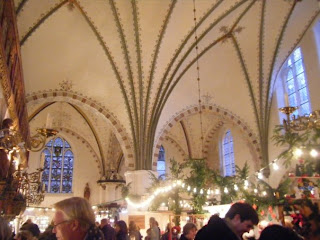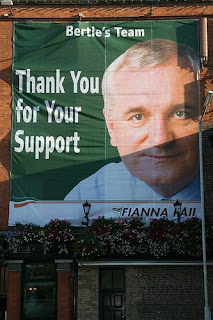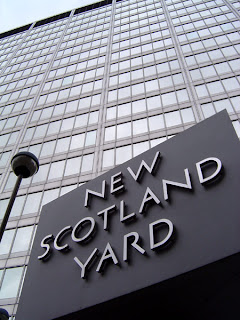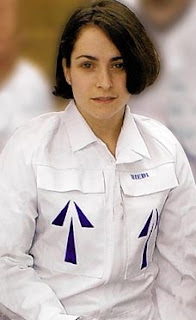
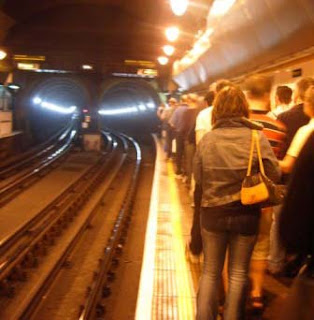
There has been some disquiet in London at the impending closure of the second oldest “Tube” line, The East London Line on the 22nd December 2007 until 2010. Part of this disquiet relates to the Line being more widely used with its connection to the extended Jubilee Line at Canada Water as well as its long standing connection to the District Line at Whitechapel. In truth the East London Line has always been somewhat unique as the only Underground Line which doesn’t go through Central London, having two termini only 600 metres apart and having the oldest tunnel on the system, the Thames Tunnel designed by Marc Brunel, father of Isambard Kingdom Brunel dating from 1843 and which along with the Tower Hill subway was the first sub-aqueous tunnel in modern times. There is reference to a tunnel in Babylon, but no archaeological evidence. More importantly it was the tunnel where modern tunnelling methods were developed and though underground and largely inseen it is a listed building!
 The plaque commemorating the tunnel construction at Rotherhithe Station
The plaque commemorating the tunnel construction at Rotherhithe StationHowever there are sound reasons for closing the East London Line to develop the “London Overground” network an exciting orbital transport system for London. The purpose of these extensions and changes is to convert the line from a minor stub to a key transport artery that can be used to create an orbital railway linking London's suburbs.This is projected to be a catalyst for £10bn of regeneration in some of the most deprived parts of London, to ease traffic congestion on radial routes into central London and congestion at London Bridge station and as the first phase will be ready in 2010, to provide the infrastructure to support the 2012 Olympic games which will be based in East London.
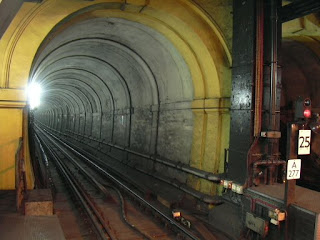 Thames Tunnel from Wapping in 2005
Thames Tunnel from Wapping in 2005The East London line extension will form part of the London Overground, an orbital railway around London. Connecting 20 of London's 33 boroughs, one in five Londoners will live within 15 minutes walk of an Overground station. As part of the plans for the construction of a London Overground network, work began to extend the East London Line to both the north and south, with the finished product becoming part of the new system and losing its London Underground status. The finalised plan consists of two phases, with the stage one to be completed by 2010. This involves the building of an extension to Dalston Junction from Whitechapel, with new stations being built at Shoreditch High Street, Hoxton, Haggerston and Dalston Junction. At the same time, the line will be extended from New Cross Gate onto the mainline tracks, allowing trains to serve all the stations between New Cross Gate and Croydon, as well as serving the branch off to Crystal Palace. These extensions will then be supplemented by an additional extension onto South London Line mainline tracks from Surrey Quays towards Clapham Junction, with a new station being built at Surrey Canal Road next to the ground of Millwall FC.
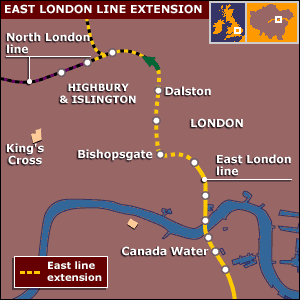
However it will not be just the Line’s commuters who will miss it during its absence but railway aficionados who admire the scale of the raw Victorian engineering on the Line which features deep cuttings lined with engineering brick and buttressed by cast iron girders leading to the unique Wapping Tunnel. For an Underground line it has a small scale and a somewhat unique atmosphere appreciated by enthusiasts for this line is a fascinating but working piece of industrial archaeology. The East London line is the only line not to enter Travelcard Zone 1 and it is the second-shortest line (after the Waterloo & City line), with an end-to-end journey time of only 14 minutes. Its total length is nine km (five miles), with nine stations, eight of which are currently open. The line runs in a contiguous tunnel from Shoreditch to Surrey Quays, with the remainder running on the surface or in cuttings. Much of the line is constructed in the cut-and-cover fashion that is typical of London's sub-surface railways. The deepest point is at Wapping station, constructed in the Thames Tunnel's original entrance shaft 18.29 m (60 ft) below the surface. The line is operated by just 6 train sets of 4 carriages each of Metropolitan Line “A” Stock dating from 1960/62. For a real display of industrial archaeology relating to the line you should visit the Brunel Museum beside the station in Rotherhithe. The museum is housed in the building which contained the pumps to keep the Thames Tunnel dry.
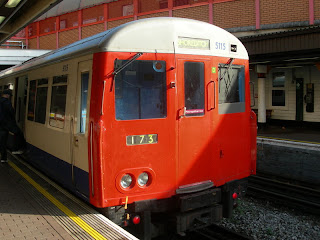
Until 2006, the East London line ran from Shoreditch station at its northern end to two termini at New Cross and New Cross Gate mainline rail stations to the south1. Originally opening as the East London Railway in 1869, the line began its life as a link from the mainline railway at New Cross Gate, and ran to Wapping via Brunel's Thames Tunnel. This tunnel was built between 1825 and 1843 and was one of the first foot tunnels under the Thames, but was converted for railway use after it was bought by the East London Railway company.

Previous tunneling attempts, in 1801 and 1807, were unsuccessful mainly because of excavation met quicksand, a sand through which fast moving water causes the sand to be held in suspension. The general opinion, formed in engineering circles at the time, was that there was no practical means of tunnelling under the Thames. In 1818, however, Brunel patented the tunneling shield, a device that made possible tunneling in safety through waterbearing strata. This led some twenty five years later to the opening of the first sub aqueous tunnel built for public use.
In 1825 operations began for building the Brunel-designed tunnel under the Thames River between Rotherhithe and Wapping. Brunel's Tunnel Shield covered the area to be excavated and consisted of 12 separate frames, comprising altogether 36 cells in which a workman was engaged working independently of the others. Propulsion for the device was a screw which drove the device forward in 114mm / 4.5in steps (the width of a brick). This scheme, which had no precedent, was halted a number of times but, fortunately the shield held. The stoppages did, however, place the scheme's finances under severe strain. At one point the operation was halted for seven years and the tunnel bricked up. When it was again started a much larger shield was used to cover the 120m/400ft of tunnel already constructed. At its lowest point construction took place only 4m/14ft below the river bed. The Thames tunnel was eventually opened in 1843. It was of a horseshoe construction with a height of 7m/23ft and width of 11m/37ft. It had a total length of 406m/1,506ft.
As a reward for his labours Marc Brunel was elected to the Royal Society and knighted, in 1841, for his services to the construction of the Thames Tunnel.
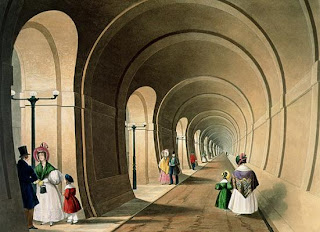 Thames Tunnel 25th March 1843Built in 1825-43, the first tunnel under the Thames - or indeed under any river - was originally used by pedestrians but was converted to a rail link in 1869
Thames Tunnel 25th March 1843Built in 1825-43, the first tunnel under the Thames - or indeed under any river - was originally used by pedestrians but was converted to a rail link in 1869In the first four months more than a million people passed through the long awaited tunnel. However whilst designed as a road tunnel the promoters ran out of funds to build the access roads and it was used as an unprofitable foot tunnel. The original access stairways can still be seen from the lift shafts in Wapping Station. The Metropolitan Railway bought the tunnel off the now bankrupt promoters and the first trains used the tunnel in 1865. The East London Line is not strictly a “Tube” Line as the stock used is the larger square surface stock as used on the Metropolitan Line used in a 4 car configuration.
The railway was extended further northwards in 1876 to reach the Great Eastern Railway lines at Shoreditch, and this tie-in allowed trains to pass from the south onto the East London Railway, and then run straight into Liverpool Street station. A regular service would run from New Cross Gate to Liverpool Street until the line was electrified in 1913, meaning that only non-Underground trains could then continue on into the mainline station. The point at which the line was severed in 1966 to improve running on other lines into Liverpool Street can be seen from Shoreditch station. The line was further extended in 1880 with a branch being built to the new New Cross station built by the South Eastern Railway. In 1884, a spur was built allowing trains to run from Shadwell to Aldgate East, thus allowing through services from other lines onto the East London Railway. In 1948, the East London Railway was bought by the London Underground, but only gained its own identity in the 1980s when the spur to the Metropolitan line became disused, and the line was named the East London line.

When the wrappers come off the “new” line in 2010 it will be a far more useful and accessible transport link stretching from Dalston Junction in the north to West Croydon in the south providing an orbital route for East and South London on both sides of the Thames. It will feature bright accessible stations and will be an important part of the transport infrastructure supporting the 2012 Olympics in East London. More than that as an important component of the “London Overground” system it will be part of a whole complex of interlinked orbital rail links which will greatly add to London’s infrastructure and make for a more liveable city regenerating and reinforcing neighbourhoods throughout the capital. Whatever qualms the rail enthusiasts have the renewed East London Line and the London Overground Network will be the culmination of many decades of campaigning to renew and revitalise and reconnect many underutilised transport links in the capital. This is a considerable achievement which will improve the lifestyles of many Londoners and reinforce London’s position as a World City.
The historic stations on the existing line are:
Shoreditch
Shoreditch station opened in 1876 and closed in 2006, having consisted of a single platform serving a single track next to the disused Bishopsgate goods yard as well as the station building upon Brick Lane, a road notable for its wide variety of curry restaurants. The station was situated just to the south of the railway line into Liverpool Street, and the Underground line at Shoreditch used to continue onto the mainline tracks until the tube line was electrified in 1913. While open, the station was the northernmost terminus of the line, but due to a shortage of passengers, trains only called there during rush hours and at weekends. Shoreditch belongs to the long tradition of Underground stations with misleading names (Harrow on the Hill being below the Hill, Acton Town being a half mile from Acton Town, Watford being a mile from Watford etc) as it is not really in Shoreditch but at the top of Brick Lane and behind the old Goods yards.
 Shoreditch - The end of the line
Shoreditch - The end of the line Shoreditch platform just before closure
Shoreditch platform just before closureDue to plans to extend the East London line to form part of the new London Overground network, Shoreditch station is now disused. Trains will leave the original route of the line to call at a new station at Shoreditch High Street while passing along the route of the old Broad Street viaduct, the only remaining structure from the old national railway station of the same name. The fact that the disused North London line runs along most of the desired route of the extension means that Shoreditch station really had very little chance of being included in the project.
Whitechapel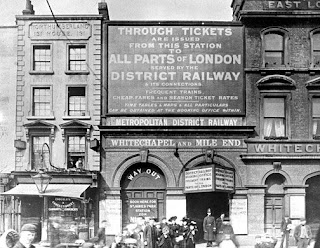
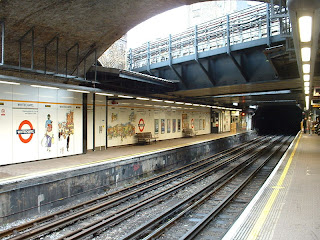
This station lies opposite the Royal London Hospital, and a street market lies just outside the station. The two 1876 East London line platforms are underneath and perpendicular to the four 1884 District and Hammersmith & City line platforms, although both lines lie in cuttings just beneath the surface. Some of the signs on the platforms are quite old, as is quite common in stations on the District Line - the station still features black boxes that light up to tell you which platform the next train will arrive on. This station used to act (before the closure of Shoreditch) as the terminus of the line except for peak hours when trains run north on the single line towards Shoreditch. During the late 19th Century, Whitechapel was infamous as one of the Jack the Ripper's favourite haunts, and later became an area frequented by the Kray brothers. The station is a short way east of the famous Brick Lane, which features Indian restaurants, clubs and a market, although Aldgate and Aldgate East stations are both much closer.
Shadwell
Built in 1876, this station is not actually connected to the Docklands Light Railway station of the same name, but passengers need only to walk round to the next street about 50 metres away, and there is a rather good pie & mash shop on the way. The tube platforms are only accessible by lift, and both stations are pretty much devoid of amenities. The surrounding area is mainly residential, although there is a market on nearby Watney Street.
Wapping
Built in 1869, this station lies on Wapping High Street just north of the entrance to Brunel's foot tunnel through which the East London line runs. There is therefore little room available for platform expansion, and so the station's future became uncertain when the East London line extension was announced. However, it has now been decided that the extended line will be served by four-carriage trains, and so the station will be able to remain open to serve the surrounding residential area. Wapping became well-known in 1986 as the site of the battle between Rupert Murdoch and the printer's unions, as it was the location of the so-called 'Fortress Wapping'.
Rotherhithe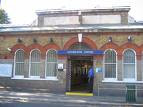
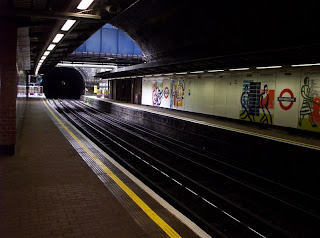
From the same era as Wapping station, Rotherhithe lies just to the south of Brunel's tunnel just off the aptly-named Brunel Road, and as with Wapping the station's future was uncertain for a while due to the short length of its platforms. The original brickwork of the Thames Tunnel can be seen from the north end of the station, and those with some time to spare can visit the nearby Brunel Engine House museum on Railway Avenue. The surrounding area boasts a colourful history of body snatching, piracy and maritime tradition, with the Mayflower having set sail from Rotherhithe in 1620 on its way to North America.
Canada Water
This comparatively new station is named after the nearby Canada Water reservoir, and was built in 1999 to serve as an interchange between the East London line and the Jubilee line extension. The station's surface building consists of a large glass drum echoing Charles Holden’s famous designs on the Piccadilly Line, and a glass-roofed bus station which serves the local area. The underground part of the station consists of a large number of concrete struts, and was built to support the weight of possible future developments above ground.
Surrey Quays
Originally known as Deptford Road when it opened in 1869, this station lies in the middle of a large junction just off Lower Road, just to the east of Southwark Park. The station was renamed Surrey Docks in 1911, but was given its current name in 1989 when the Surrey Quays Shopping Centre opened nearby. The station was originally built due to the presence of the highly popular Surrey Commercial Docks, but since the redevelopment of the Docklands in the late 20th Century, Surrey Quays has been a mixed residential and commercial area, thus providing a sufficient demand for the tube station to remain.
 Surrey Quays
Surrey QuaysSouth of this station the line surfaces and then divides into two lines leading to the southern termini at New Cross and New Cross Gate. After the East London line extension has been completed the line will split into three here instead, with a third branch heading off to a new station at Surrey Canal Road.
New Cross

This station lies on New Cross Road about 600m to the east of New Cross Gate station, and forms the only terminus of the East London line not scheduled for extension. The tube station was built in 1880 at the same time as the mainline station of the same name, which is served by South Eastern trains from Charing Cross via Waterloo East as well as those from Blackfriars and Cannon Street, with all trains to New Cross passing through London Bridge station to the north.
New Cross Gate
Situated on Goodwood Road just 600m west of New Cross, this station opened in 1869 and is currently a single platform terminus of the East London Line. The station also has four national rail platforms which are served by Southern railway trains running from Charing Cross, via Waterloo East and London Bridge stations, to Caterham and West Croydon in the south, and to Victoria via Clapham Junction. By approximately 2010, New Cross Gate will no longer be a terminus, and instead the Underground trains will switch onto these national rail lines and continue through to the mainline stations all the way to Crystal Palace and West Croydon.
The station was originally known as New Cross, but due to possible confusion with the nearby South Eastern railway station, the suffix 'Gate' was added and has remained to this day. New Cross Gate station is near to Goldsmith's College, part of the University of London, and so the station is often full of students.
St Mary's (Whitechapel)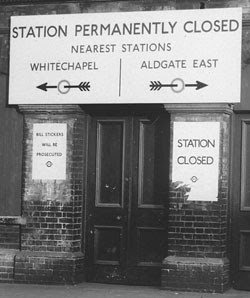
This station used to lie between Aldgate East and Whitechapel in the days when the East London line was connected by a curve from St Mary's to Shadwell. The station was generally unpopular due to the cramped setting of the station and the tight curve on which the station stood. Service was slowly reduced until 1938 when Aldgate East station was moved further east, leading to St Mary's being surplus to requirements. The station building was hit by a bomb in 1940, and now all that remains are some emergency exit doors. When the St. Mary’s curve was operational for passenger service trains used to run on the District / Circle Line from Edgware Road and High Street Kensington via Victoria to New Cross. Now the connection is used just for stock movements and engineering trains.
 Update on Clapham Extension – 12 February 2009
Update on Clapham Extension – 12 February 2009
The planned extension of the East London rail line was today given the go-ahead by Boris Johnson, and Transport Secretary Geoff Hoon. The new line funded by the Government, Transport for London and City Hall will link Surrey Quays to Peckham and Clapham Junction, providing direct links to the City and Docklands.
The extension is intended to reduce congestion on radial routes, and at central London interchange stations. The Department for Transport is providing £64 million for the East London line extension and other transport improvements. The Mayor and TfL will contribute £15 million towards the cost of the scheme.
Mr Johnson said: "This is tremendous news. We can finally get cracking on a vital section of track that will orbitise our Overground rail services. "I promised Londoners that where funds were made available we would build the improvements they need. "And it will be a real achievement when our Overground services are fully oysterised. (Oyster is the name of the London wide stored value ticketing system) I am delighted a long hard slog of negotiations between us and the Department of Transport has borne fruit that will result in a superb new service for thousands of Londoners."
Transport Commissioner, Peter Hendy said: "The East London line extension will deliver a key rail link south of the river and improve local transport for Londoners by providing more choice and better access to other parts of the capital."
"The extension to Clapham Junction will provide significantly improved access to the City and Docklands and will allow us to extend the high standards provided on our existing London Overground network - staff at all stations, Oyster pay as you go, and frequent services - to south Londoners."
Here is TfL's promo for the new line - the excellent aerial shots make sense of the route decisions;For more on London Underground and its unique heritage and contribution to design see TUBEBLOGS in my Blog sidebar >>>>>>>>>>>>>>>>>>>>>>>>



